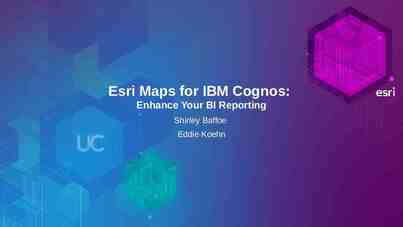Chapter 3 – Cloud Infrastructure Dan C. Marinescu Cloud Computing:
45 Slides1.34 MB
Chapter 3 – Cloud Infrastructure Dan C. Marinescu Cloud Computing: Theory and Practice. Chapter 3 1
Contents IaaS services from Amazon. Regions and availability zones for Amazon Web Services. Instances – attributes and cost. A repertoire of Amazon Web Services. SaaS and PaaS services from Google. SaaS and PaaS services from Microsoft. Open-source platforms for private clouds. Cloud storage diversity and vendor lock-in. Cloud interoperability; the Intercloud. Energy use and ecological impact large datacenters . Service and compliance level agreements. Responsibility sharing between user and the cloud service provider. User security concerns. User motivation. Dan C. Marinescu Cloud Computing: Theory and Practice. Chapter 3 2
Existing cloud infrastructure The cloud computing infrastructure at Amazon, Google, and Microsoft (as of mid 2012). Amazon is a pioneer in Infrastructure-as-a-Service (IaaS). Google's efforts are focused on Software-as-a-Service (SaaS) and Platform-as-a-Service (PaaS). Microsoft is involved in PaaS. Private clouds are an alternative to public clouds. Open-source cloud computing platforms such as: Eucalyptus, OpenNebula, Nimbus, OpenStack can be used as a control infrastructure for a private cloud. Dan C. Marinescu Cloud Computing: Theory and Practice. Chapter 3 3
Amazon Web Services (AWS) AWS IaaS cloud computing services launched in 2006. Businesses in 200 countries used AWS in 2012. The infrastructure consists of compute and storage servers interconnected by high-speed networks and supports a set of services. An application developer: Installs applications on a platform of his/her choice. Manages resources allocated by Amazon. Dan C. Marinescu Cloud Computing: Theory and Practice. Chapter 3 4
AWS regions and availability zones Amazon offers cloud services through a network of data centers on several continents. In each region there are several availability zones interconnected by high-speed networks. An availability zone is a data center consisting of a large number of servers. Regions do not share resources and communicate through the Internet. Dan C. Marinescu Cloud Computing: Theory and Practice. Chapter 3 5
Dan C. Marinescu Cloud Computing: Theory and Practice. Chapter 3 6
AWS instances An instance is a virtual server with a well specified set of resources including: CPU cycles, main memory, secondary storage, communication and I/O bandwidth. The user chooses: The region and the availability zone where this virtual server should be placed. An instance type from a limited menu of instance types. When launched, an instance is provided with a DNS name; this name maps to a private IP address for internal communication within the internal EC2 communication network. public IP address for communication outside the internal Amazon network, e.g., for communication with the user that launched the instance. Dan C. Marinescu Cloud Computing: Theory and Practice. Chapter 3 7
AWS instances (cont’d) Network Address Translation (NAT) maps external IP addresses to internal ones. The public IP address is assigned for the lifetime of an instance. An instance can request an elastic IP address, rather than a public IP address. The elastic IP address is a static public IP address allocated to an instance from the available pool of the availability zone. An elastic IP address is not released when the instance is stopped or terminated and must be released when no longer needed. Dan C. Marinescu Cloud Computing: Theory and Practice. Chapter 3 8
EC2 instance Compute server EC2 instance Instance EC2 instance Compute server SQS Compute server Cloud watch Cloud front Elastic cache Cloud interconnect NAT Internet Cloud formation Elastic beanstalk Elastic load balancer AWS management console S3 EBS S3 Servers running AWS services S3 S3 EBS SDB SDB SDB Simple DB AWS storage servers Dan C. Marinescu Cloud Computing: Theory and Practice. Chapter 3 9
Steps to run an application Retrieve the user input from the front-end. Retrieve the disk image of a VM (Virtual Machine) from a repository. Locate a system and requests the VMM (Virtual Machine Monitor) running on that system to setup a VM. Invoke the Dynamic Host Configuration Protocol (DHCP) and the IP bridging software to set up MAC and IP addresses for the VM. Dan C. Marinescu Cloud Computing: Theory and Practice. Chapter 3 10
User interactions with AWS The AWS Management Console. The easiest way to access all services, but not all options may be available. AWS SDK libraries and toolkits are provided for several programming languages including Java, PHP, C#, and Objective-C. Raw REST requests. Dan C. Marinescu Cloud Computing: Theory and Practice. Chapter 3 11
Examples of Amazon Web Services AWS Management Console - allows users to access the services offered by AWS . Elastic Cloud Computing (EC2) - allows a user to launch a variety of operating systems. Simple Queuing Service (SQS) - allows multiple EC2 instances to communicate with one another. Simple Storage Service (S3), Simple DB, and Elastic Bloc Storage (EBS) - storage services. Cloud Watch - supports performance monitoring. Auto Scaling - supports elastic resource management. Virtual Private Cloud - allows direct migration of parallel applications. Dan C. Marinescu Cloud Computing: Theory and Practice. Chapter 3 12
CloudWatch EC2 Linux, Debian, Fedora,OpenSolaris, Open Suse, Red Hat, Ubuntu, Windows, Suse Linux S3 EBS SQS -Simple Queue Service EC2 Simple DB Linux, Debian, Fedora,OpenSolaris, Open Suse, Red Hat, Ubuntu, Windows, Suse Linux Virtual Private Cloud Autoscaling AWS Management Console Dan C. Marinescu Cloud Computing: Theory and Practice. Chapter 3 13
EC2 – Elastic Cloud Computing EC2 - web service for launching instances of an application under several operating systems, such as: Several Linux distributions. Microsoft Windows Server 2003 and 2008. OpenSolaris. FreeBSD. NetBSD. A user can Load an EC2 instance with a custom application environment. Manage network’s access permissions. Run the image using as many or as few systems as desired. Dan C. Marinescu Cloud Computing: Theory and Practice. Chapter 3 14
EC2 (cont’d) Import virtual machine (VM) images from the user environment to an instance through VM import. EC2 instances boot from an AMI (Amazon Machine Image) digitally signed and stored in S3. Users can access: Images provided by Amazon. Customize an image and store it in S3. An EC2 instance is characterized by the resources it provides: VC (Virtual Computers) – virtual systems running the instance. CU (Compute Units) – measure computing power of each system. Memory. I/O capabilities. Dan C. Marinescu Cloud Computing: Theory and Practice. Chapter 3 15
Instance types Standard instances: micro (StdM), small (StdS), large (StdL), extra large (StdXL); small is the default. High memory instances: high-memory extra large (HmXL), highmemory double extra large (Hm2XL), and high-memory quadruple extra large (Hm4XL). High CPU instances: high-CPU extra large (HcpuXL). Cluster computing: cluster computing quadruple extra large (Cl4XL). Dan C. Marinescu Cloud Computing: Theory and Practice. Chapter 3 16
Instance cost A main attraction of the Amazon cloud computing is the low cost. Dan C. Marinescu Cloud Computing: Theory and Practice. Chapter 3 17
S3 – Simple Storage System Service designed to store large objects; an application can handle an unlimited number of objects ranging in size from 1 byte to 5 TB. An object is stored in a bucket and retrieved via a unique, developer-assigned key; a bucket can be stored in a Region selected by the user. Supports a minimal set of functions: write, read, and delete; it does not support primitives to copy, to rename, or to move an object from one bucket to another. The object names are global. S3 maintains for each object: the name, modification time, an access control list, and up to 4 KB of user-defined metadata. Dan C. Marinescu Cloud Computing: Theory and Practice. Chapter 3 18
S3 (cont’d) Authentication mechanisms ensure that data is kept secure. Objects can be made public, and rights can be granted to other users. S3 computes the MD5 of every object written and returns it in a field called ETag. A user is expected to compute the MD5 of an object stored or written and compare this with the ETag; if the two values do not match, then the object was corrupted during transmission or storage. Dan C. Marinescu Cloud Computing: Theory and Practice. Chapter 3 19
Elastic Block Store (EBS) Provides persistent block level storage volumes for use with EC2 instances; suitable for database applications, file systems, and applications using raw data devices. A volume appears to an application as a raw, unformatted and reliable physical disk; the range 1 GB -1 TB. An EC2 instance may mount multiple volumes, but a volume cannot be shared among multiple instances. EBS supports the creation of snapshots of the volumes attached to an instance and then uses them to restart the instance. The volumes are grouped together in Availability Zones and are automatically replicated in each zone. Dan C. Marinescu Cloud Computing: Theory and Practice. Chapter 3 20
SimpleDB Non-relational data store. Supports store and query functions traditionally provided only by relational databases. Supports high performance Web applications; users can store and query data items via Web services requests. Creates multiple geographically distributed copies of each data item. It manages automatically: Dan C. Marinescu The infrastructure provisioning. Hardware and software maintenance. Replication and indexing of data items. Performance tuning. Cloud Computing: Theory and Practice. Chapter 3 21
SQS - Simple Queue Service Hosted message queues are accessed through standard SOAP and Query interfaces. Supports automated workflows - EC2 instances can coordinate by sending and receiving SQS messages. Applications using SQS can run independently and asynchronously, and do not need to be developed with the same technologies. A received message is “locked'' during processing; if processing fails, the lock expires and the message is available again. Queue sharing can be restricted by IP address and time-of-day. Dan C. Marinescu Cloud Computing: Theory and Practice. Chapter 3 22
CloudWatch Monitoring infrastructure used by application developers, users, and system administrators to collect and track metrics important for optimizing the performance of applications and for increasing the efficiency of resource utilization. Without installing any software a user can monitor either seven or eight pre-selected metrics and then view graphs and statistics for these metrics. When launching an Amazon Machine Image (AMI) the user can start the CloudWatch and specify the type of monitoring: Basic Monitoring - free of charge; collects data at five-minute intervals for up to seven metrics. Detailed Monitoring - subject to charge; collects data at one minute interval. Dan C. Marinescu Cloud Computing: Theory and Practice. Chapter 3 23
AWS services introduced in 2012 Route 53 - low-latency DNS service used to manage user's DNS public records. Elastic MapReduce (EMR) - supports processing of large amounts of data using a hosted Hadoop running on EC2. Simple Workflow Service (SWF) - supports workflow management; allows scheduling, management of dependencies, and coordination of multiple EC2 instances. ElastiCache - enables web applications to retrieve data from a managed in-memory caching system rather than a much slower diskbased database. DynamoDB - scalable and low-latency fully managed NoSQL database service. Dan C. Marinescu Cloud Computing: Theory and Practice. Chapter 3 24
AWS services introduced in 2012 (cont’d) CloudFront - web service for content delivery. Elastic Load Balancer - automatically distributes the incoming requests across multiple instances of the application. Elastic Beanstalk - handles automatically deployment, capacity provisioning, load balancing, auto-scaling, and application monitoring functions. CloudFormation - allows the creation of a stack describing the infrastructure for an application. Dan C. Marinescu Cloud Computing: Theory and Practice. Chapter 3 25
Elastic Beanstalk Handles automatically the deployment, capacity provisioning, load balancing, auto-scaling, and monitoring functions. Interacts with other services including EC2, S3, SNS, Elastic Load Balance and AutoScaling. The management functions provided by the service are: Deploy a new application version (or rollback to a previous version). Access to the results reported by CloudWatch monitoring service. Email notifications when application status changes or application servers are added or removed. Access to server log files without needing to login to the application servers. The service is available using: a Java platform, the PHP server-side description language, or the .NET framework. Dan C. Marinescu Cloud Computing: Theory and Practice. Chapter 3 26
SaaS services offered by Google Gmail - hosts Emails on Google servers and provides a web interface to access the Email. Google docs - a web-based software for building text documents, spreadsheets and presentations. Google Calendar - a browser-based scheduler; supports multiple user calendars, calendar sharing, event search, display of daily/weekly/monthly views, and so on. Google Groups - allows users to host discussion forums to create messages online or via Email. Picasa - a tool to upload, share, and edit images. Google Maps - web mapping service; offers street maps, a route planner, and an urban business locator for numerous countries around the world Dan C. Marinescu Cloud Computing: Theory and Practice. Chapter 3 27
PaaS services offered by Google AppEngine - a developer platform hosted on the cloud. Initially supported Python, Java was added later. The database for code development can be accessed with GQL (Google Query Language) with a SQL-like syntax. Google Co-op - allows users to create customized search engines based on a set of facets/categories. Google Drive - an online service for data storage. Google Base - allows users to load structured data from different sources to a central repository, a very large, self-describing, semistructured, heterogeneous database. Dan C. Marinescu Cloud Computing: Theory and Practice. Chapter 3 28
PaaS and SaaS services from Microsoft Windows Azure - an operating system; has 3 components: Compute - provides a computation environment. Storage - for scalable storage. Fabric Controller - deploys, manages, and monitors applications. SQL Azure - a cloud-based version of the SQL Server. Azure AppFabric, formerly .NET Services - a collection of services for cloud applications. Dan C. Marinescu Cloud Computing: Theory and Practice. Chapter 3 29
Azure Connect Applications and Data CDN Storage Compute Blobs Tables Queues Fabric Controller Dan C. Marinescu Cloud Computing: Theory and Practice. Chapter 3 30
Open-source platforms for private clouds Eucalyptus - can be regarded as an open-source counterpart of Amazon's EC2. Open-Nebula - a private cloud with users actually logging into the head node to access cloud functions. The system is centralized and its default configuration uses the NFS file system. Nimbus - a cloud solution for scientific applications based on Globus software; inherits from Globus: Dan C. Marinescu The image storage. The credentials for user authentication. The requirement that a running Nimbus process can ssh into all compute nodes. Cloud Computing: Theory and Practice. Chapter 3 31
Eucalyptus Virtual Machines - run under several VMMs including Xen, KVM, and VMware. Node Controller - runs on server nodes hosting a VM and controls the activities of the node. Cluster Controller - controls a number of servers. Cloud Controller - provides the cloud access to end-users, developers, and administrators. Storage Controller - provides persistent virtual hard drives to applications. It is the correspondent of EBS. Storage Service (Walrus) - provides persistent storage; similar to S3, it allows users to store objects in buckets. Dan C. Marinescu Cloud Computing: Theory and Practice. Chapter 3 32
Dan C. Marinescu Cloud Computing: Theory and Practice. Chapter 3 33
Dan C. Marinescu Cloud Computing: Theory and Practice. Chapter 3 34
Cloud storage diversity and vendor lock-in Risks when a large organization relies on a single cloud service provider: Cloud services may be unavailable for a short or an extended period of time. Permanent data loss in case of a catastrophic system failure. The provider may increase the prices for service. Switching to another provider could be very costly due to the large volume of data to be transferred from the old to the new provider. A solution is to replicate the data to multiple cloud service providers, similar to data replication in RAID. Dan C. Marinescu Cloud Computing: Theory and Practice. Chapter 3 35
RAID 5 controller a1 a2 a3 aP b1 b2 bP b3 c1 cP c2 c3 dP d1 d2 d3 Disk 1 Disk 2 Disk 3 Disk 4 (a) Cloud 1 Cloud 2 a1 b1 c1 dP Client a2 b2 d1 c1 cP d1 Proxy aP d3 b3 c3 d3 a3 bP c2 d2 Cloud 3 Cloud 4 (b) Dan C. Marinescu Cloud Computing: Theory and Practice. Chapter 3 36
Cloud interoperability; the Intercloud An Intercloud a federation of clouds that cooperate to provide a better user experience. Is an Intercloud feasible? Not likely at this time: Dan C. Marinescu There are no standards for either storage or processing. The clouds are based on different delivery models. The set of services supported by these delivery models is large and open; new services are offered every few months. CSPs (Cloud Service Providers) believe that they have a competitive advantage due to the uniqueness of the added value of their services. Security is a major concern for cloud users and an Intercloud could only create new threats. Cloud Computing: Theory and Practice. Chapter 3 37
Energy use and ecological impact The energy consumption of large-scale data centers and their costs for energy and for cooling are significant. In 2006, the 6,000 data centers in the U.S consumed 61x109 KWh of energy, 1.5% of all electricity consumption, at a cost of 4.5 billion. The energy consumed by the data centers was expected to double from 2006 to 2011 and peak instantaneous demand to increase from 7 GW to 12 GW. The greenhouse gas emission due to the data centers is estimated to increase from 116 x109 tones of CO2 in 2007 to 257 tones in 2020 due to increased consumer demand. The effort to reduce energy use is focused on computing, networking, and storage activities of a data center. Dan C. Marinescu Cloud Computing: Theory and Practice. Chapter 3 38
Energy use and ecological impact (cont’d) Operating efficiency of a system is captured by the performance per Watt of power. The performance of supercomputers has increased 3.5 times faster than their operating efficiency – 7,000% versus 2,000% during the period 1998 – 2007. A typical Google cluster spends most of its time within the 10-50% CPU utilization range; there is a mismatch between server workload profile and server energy efficiency. Dan C. Marinescu Cloud Computing: Theory and Practice. Chapter 3 39
Energy-proportional systems An energy-proportional system consumes no power when idle, very little power under a light load and, gradually, more power as the load increases. By definition, an ideal energy-proportional system is always operating at 100% efficiency. Humans are a good approximation of an ideal energy proportional system; about 70 W at rest, 120 W on average on a daily basis, and can go as high as 1,000 – 2,000 W during a strenuous, short time effort. Even when power requirements scale linearly with the load, the energy efficiency of a computing system is not a linear function of the load; even when idle, a system may use 50% of the power corresponding to the full load. Dan C. Marinescu Cloud Computing: Theory and Practice. Chapter 3 40
Percentage of power usage 100 Typical operating region 90 Power 80 70 Energy efficiency 60 50 40 30 20 10 0 0 Dan C. Marinescu 10 20 30 40 50 60 70 80 Cloud Computing: Theory and Practice. Chapter 3 90 100 Percentage of system utilization 41
Service Level Agreement (SLA) SLA - a negotiated contract between the customer and CSP; can be legally binding or informal. Objectives: Identify and define the customer’s needs and constraints including the level of resources, security, timing, and QoS. Provide a framework for understanding; a critical aspect of this framework is a clear definition of classes of service and the costs. Simplify complex issues; clarify the boundaries between the responsibilities of clients and CSP in case of failures. Reduce areas of conflict. Encourage dialog in the event of disputes. Eliminate unrealistic expectations. Specifies the services that the customer receives, rather than how the cloud service provider delivers the services. Dan C. Marinescu Cloud Computing: Theory and Practice. Chapter 3 42
Responsibility sharing between user and CSP User responsibility SaaS Dan C. Marinescu PaaS IaaS Interface Interface Interface Application Application Application Operating system Operating system Operating system Hypervisor Hypervisor Hypervisor Computing service Computing service Computing service Storage service Storage service Storage service Network Network Network Local infrastructure Local infrastructure Local infrastructure Cloud Computing: Theory and Practice. Chapter 3 C L O U D U S E R S E R V I C E P R O V I D E R 43
User security concerns Potential loss of control/ownership of data. Data integration, privacy enforcement, data encryption. Data remanence after de-provisioning. Multi tenant data isolation. Data location requirements within national borders. Hypervisor security. Audit data integrity protection. Verification of subscriber policies through provider controls. Certification/Accreditation requirements for a given cloud service. Dan C. Marinescu Cloud Computing: Theory and Practice. Chapter 3 44
Reasons driving decision to use public clouds Dan C. Marinescu Cloud Computing: Theory and Practice. Chapter 3 45


















































